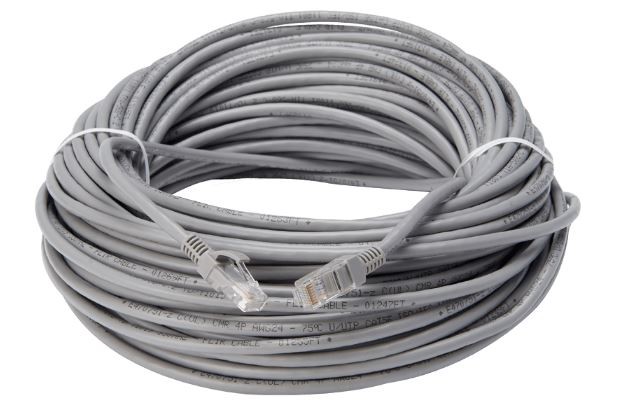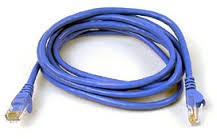Cables: Ethernet cable types
Updated: Ethernet cables are widely used for wired networks, or to carry telephone and video signals. Ethernet cables extend limited distances due to their electrical transmission characteristics.


Types of Ethernet Cables
Ethernet cables vary in durability, flexibility, signal capabilities, and manufacturing costs.
Solid UTP Category Ethernet Cables
- Uses solid insulated bare copper conductors.
- Used in permanent and semi-permanent installations.
- Designed for long distance horizontal and backbone cable runs, Power over Ethernet (PoE), and HD applications.
- Should not be over-flexed, bent, or twisted beyond the cable recommended specifications.
- Cost effective.
Standard UTP Category Ethernet Cables
- Uses multiple strands of insulated bare copper conductors.
- Used for patch cords / cables connecting workstations (e.g., From wall-plate outlet to patch panel, and from patch panels to individual workstations.)
- Designed for short distances.
- Higher attenuation than solid category cables.
- More flexible than solid conductors.
- Costly to manufacture.
Ethernet Cable Categories
In addition to Ethernet cable types, Ethernet cables can be categorized based on how old they are, what speeds they support, and how they mitigate signal interference.
Category 5 (Cat5)
- An older type of network cabling.
- Supports speeds between 10 Mbps and 100 Mbps.
- Capable of 1000 Mbps gigabit with shorter cables.
- Not commonly available for purchase, but could be found coupled with older routers, switches, or other networking devices.
Category 5 enhanced (Cat5e)
- An improved variation of Cat5 cabling.
- Improved speed and reliability.
- Supports 1000 Mbps gigabit speeds.
- Reduces Crosstalk interference between wires inside the cable.
Category 6 (Cat6)
- An improved variation of Cat5e cabling.
- Reduced interference.
- Supports up to 10-Gigabit speeds.
- Not commonly used on home applications.